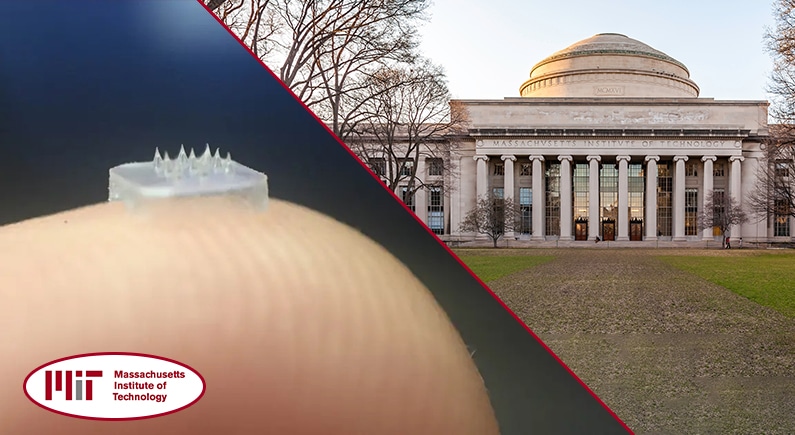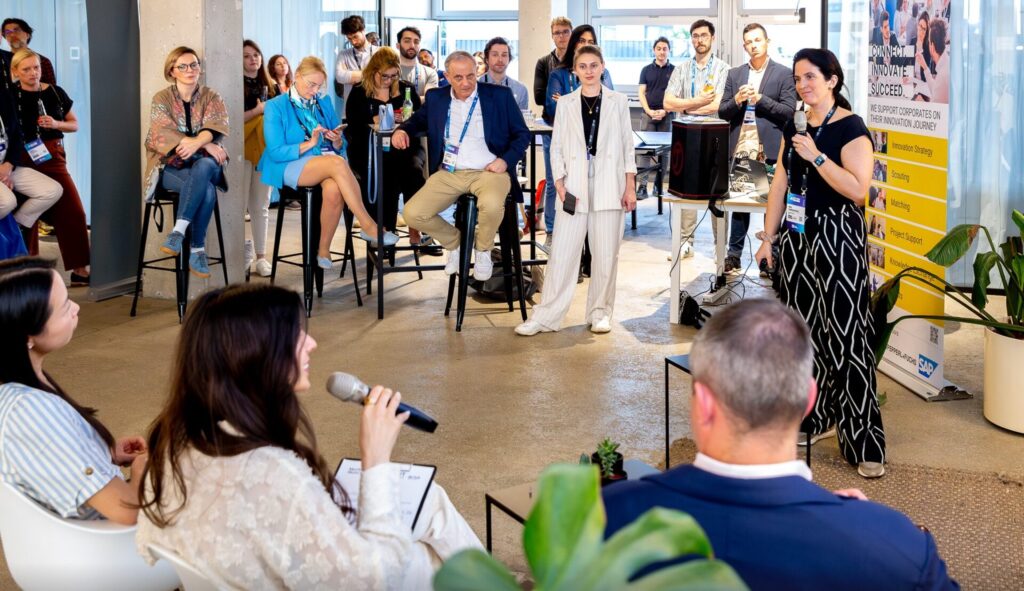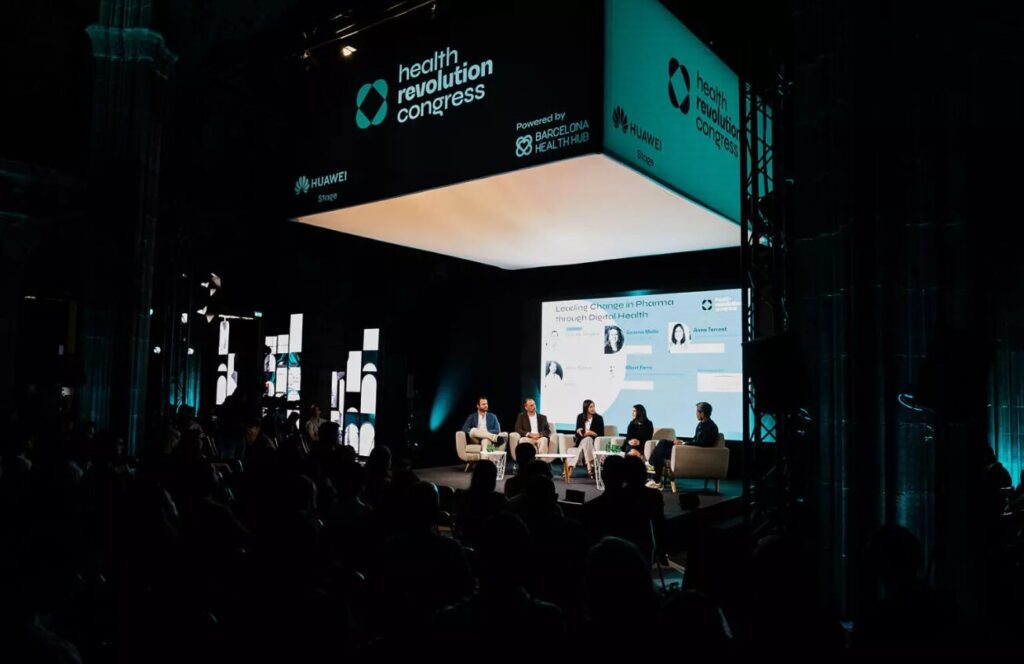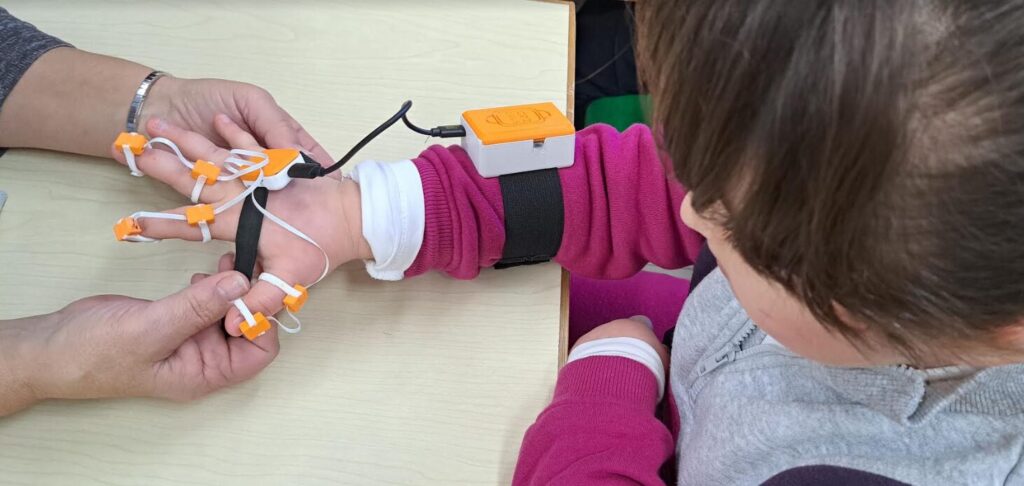
Michael Joe Cini
16th May 2023
Microneedle vaccine printer scaling up outreach to people
Getting vaccines to parts of the world where they’re needed in large quantities is not always easy. For efficacy, many vaccines need to be kept in cold storage during transit, and remote areas often have challenges with this infrastructure. A team of researchers has created a mobile vacuum printer that can produce hundreds of microneedle vaccines daily. This new technology could solve vaccine delivery challenges in areas with minimal infrastructure.
Thermostable mRNA vaccines: A new reality for medicine
The MIT team, led by former MIT postdoc Aurelien van der Straeten, Morteza Sarmadi, and John Daristotle, published their findings in Nature Biotechnology. The paper appeared on 24th April 2023. It is titled ‘A microneedle vaccine printer for thermostable COVID-19 mRNA vaccines, and details how the researchers devised a novel way of administering vaccines through microneedles whose tips dissolve upon contact with skin, as opposed to traditional injection of drugs.
To print the vaccine microneedles, the researchers used an ‘ink’ that contained RNA vaccine molecules encapsulated in lipid nanoparticles. These lipid nanoparticles act as a suitable medium for the vaccine molecules, allowing them to remain stable for long periods. The ‘ink’ contains polymers – a 50/50 combination of polyvinylpyrrolidone and polyvinyl alcohol – easily moulded into the right shape and can remain stable for extended periods – up to months. And unlike traditional media, the ink can stay stable at room temperature or even higher, enhancing its utility in areas with limited cold storage facilities.
The researchers conducted tests to determine the efficacy and long-term stability of the vaccines by comparing them to traditional intramuscular injections. Firstly, they created an ink that contained RNA coding for luciferase – a luminescent protein. They then stored the microneedle patches at room temperature for up to six months. In storage, the patches induced a strong luminescent response when applied to mice; that of the traditional intramuscular injection declined with time.
With the COVID-19 microneedle vaccine, the researchers vaccinated mice with two doses. The first dose and the second were four weeks apart. After measuring the antibody response to the virus, the researchers found that mice vaccinated with the microneedle patch had a similar antibody response to those that received an injected RNA vaccine. The researchers found the same reaction with microneedle patches stored at room temperature for up to three months. “With the possibility of scaling up vaccine manufacturing and improved stability at higher temperatures, mobile vaccine printers can facilitate widespread access to RNA vaccines,” said Joseph DeSimone, a professor of translational medicine at Stanford University.
Creating microneedle vaccines: Scaling the hurdles
Former MIT postdoctoral researcher Aurelien Vander Straeten, Morteza Sarmadi, and incumbent postdoc John Daristotle headed the microneedle vaccine project. Straeten also has experience with drug development, having worked as a Drug Product Development Scientist with Quantum Biosciences. Sarmadi has a PhD in Mechanical Engineering from MIT and has worked at the MIT Koch Institute for Integrative Cancer Research. His most recent role is at SiO2 Materials Science. John Daristotle is a postdoctoral researcher at MIT’s Langer Lab and Koch Institute for Integrative Research.
The senior authors of the project are Robert Langer and Ana Jaklenec. Jacklenec is a senior researcher with over ten years of experience in bioengineering, materials science, and vaccine stabilization and delivery. She is a PI and Principal Research Scientist at the Langer Lab at the Koch Institute for Integrative Cancer Research. Robert S. Langer, a professor of Chemical Engineering, is regarded as the founder of tissue engineering in regenerative medicine. His team was the first to develop microneedle patches for medical use in 2019.
Other researchers on the team are Maria Kanelli, Lisa Tostanoski, Joe Collins, Apurva Pardeshi, and Jooli Han. The Biomedical Advanced Research and Development Authority (BARDA), the Belgian American Educational Foundation, and the Wallonia-Brussels International funded the research project. Funding also came from the Onassis Foundation, the US National Institutes of Health (NIH), and the National Cancer Institute through the Koch Institute Support Grant.
Vaccine printer to solve storage problems for people in remote areas
Because most vaccines are produced in a few central locations, healthcare systems must have robust logistics and storage facilities to ensure they reach the target patients effectively. Many vaccines today require cold storage and similar equipment to be successfully administered to patients. This can be a potential challenge for remote areas or low and middle-income countries, such as in Africa, despite the availability of suitable vaccines. Several African countries – with the highest burden of diseases such as Ebola – do not have enough cold storage facilities, and startups that offer cold storage solutions face financing challenges and insufficient energy supply.
Researchers at MIT are reimagining the future of vaccine delivery through their latest solution. As their new solution promises, we may no longer need cold storage as a criterion for getting vaccines to those who need them. Their proposed solution is a mobile vaccine printer that can produce about a hundred vaccines in two days. According to them, it is possible to scale up the capacity of the printer to produce several hundred vaccines in a single day.
Ana Jaklenec, one of the researchers on the study and a scientist at MIT’s Koch Institute for Integrative Cancer Research, says positively of the potential for the new solution: “We could someday have on-demand vaccine production.” The printer can fit on a tabletop and be deployed anywhere vaccines are needed. Jaklenec gave an example of the ebola outbreak, pointing out that the new solution could be deployed anywhere. Such a solution is required to produce the necessary vaccines, improving global health outcomes.
Recognizing the peculiar challenge faced by refugee camps, military bases, and other remote areas, the team’s chief motivation was to find a way to produce vaccines on demand and reduce the need to overwhelm medical professionals with the burden of administering vaccines. “When Covid-19 started, concerns about vaccine stability and vaccine access motivated us to try to incorporate RNA vaccines into microneedle patches,” said John Daristotle, a postdoctoral fellow at MIT. Their solution was a portable vaccine printer that could produce patches with hundreds of microneedles, each containing the vaccine. The patches can be attached to the skin, and the vaccine can enter the skin without any traditional injection.
Join us at the Med-Tech World Roadshow
We’re thrilled to invite you to an exciting event in London, where you’ll experience an unparalleled opportunity to network, gain insights, and witness innovation in the realm of digital health and med-tech. Don’t let this exciting occasion pass you by – let’s come together and explore how we can revolutionize the healthcare landscape.






